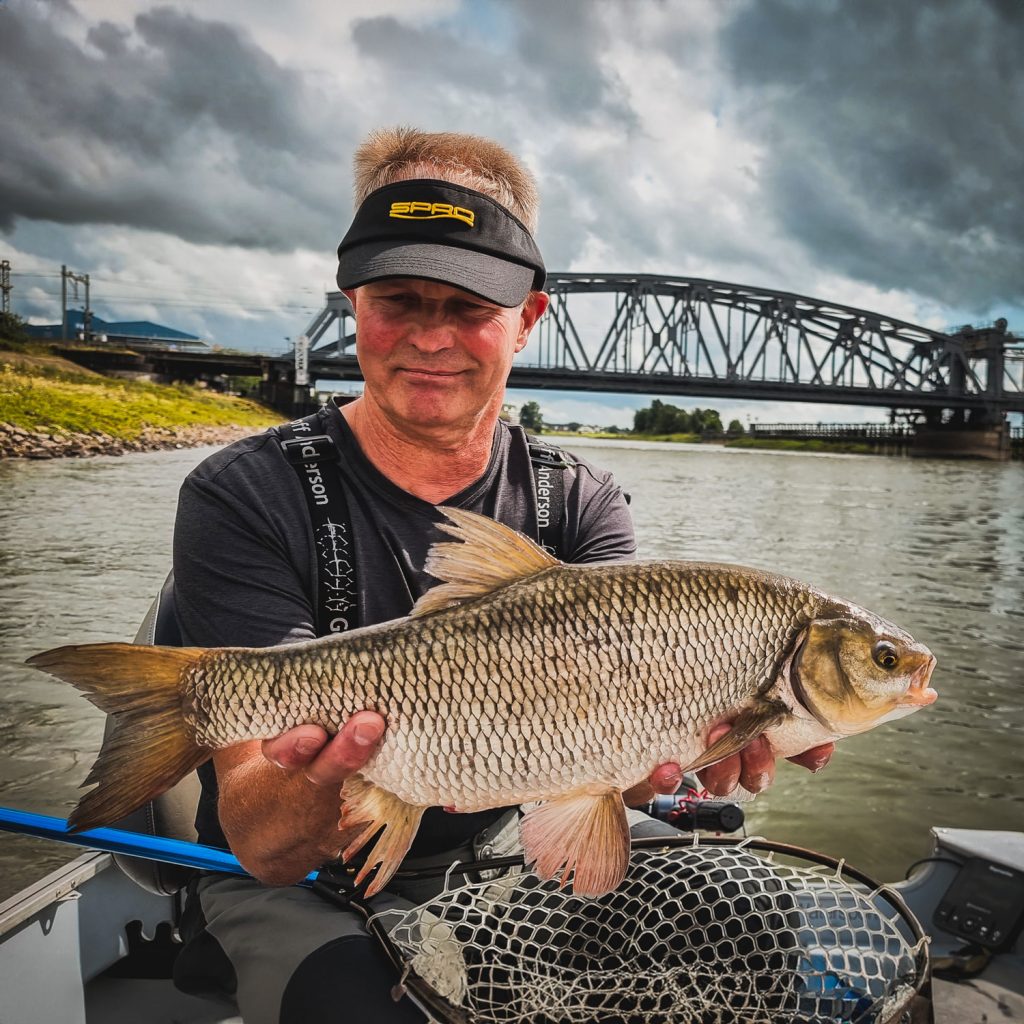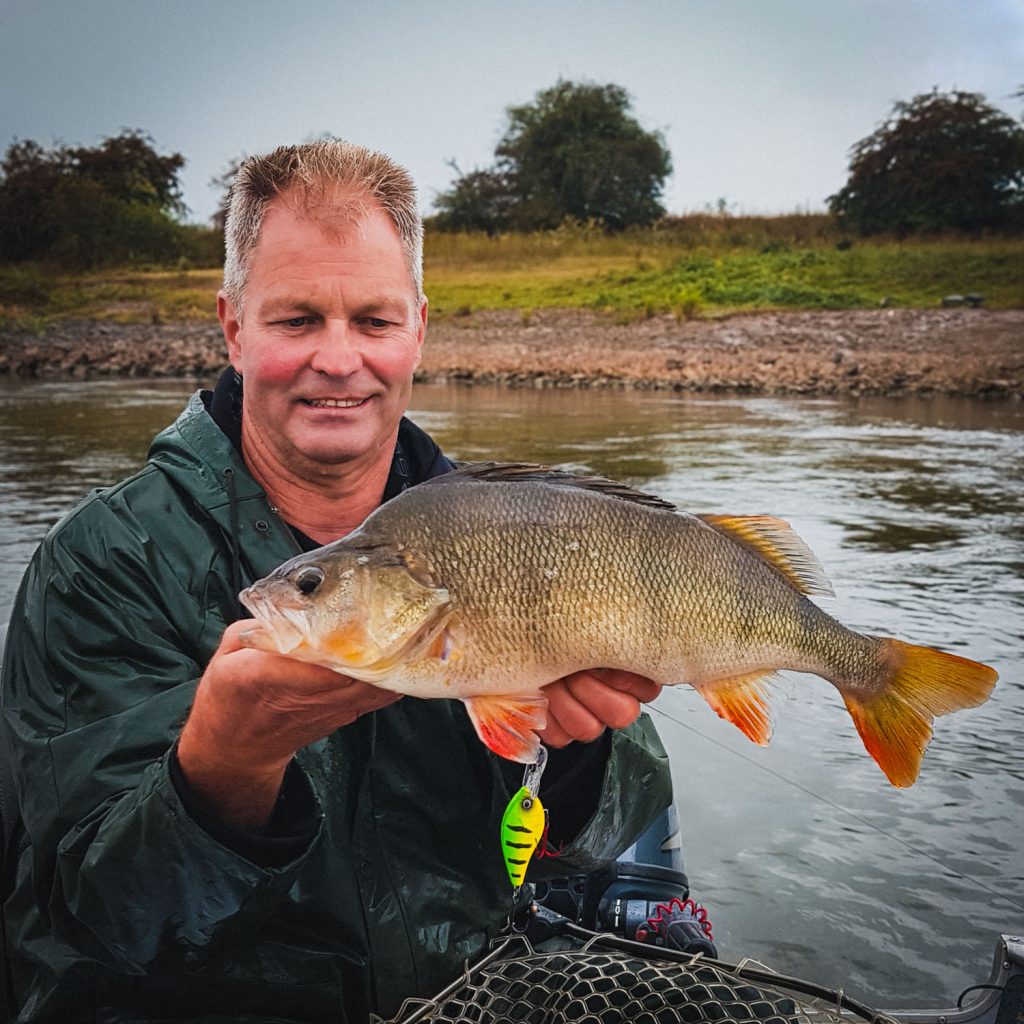According to some casting purists, trolling has nothing to do with fishing. In the video shown below Eddy te Mebel shows you that trolling is more than simply towing a lure behind your dinghy. In this blog you can easily soak up information so that you can troll for predatory species swiftly.
In this video Eddy tells you all he knows about trolling with small lures.
SPOT CHOICE
In the late summer and autumn fish tend to spread out, especially on a river. You can expect fish about anywhere. That is exactly why trolling can be a devastating technique. You cover a lot of water and eventually you will run into a fish. As a guideline it’s good to aim for edges of 3 to 3,5 meters deep. Run your lures on the bottom of those shelves. That’s always a safe bet.

LURESIn terms of lures Eddy loves using small chubby lures with a length of 4 – 8cm. The diving depth of these lures is what is most important. In general you can expect most fish close to the bottom so that is where you want to present your lures. The depth of your chosen fishing spot is decisive for which lure to choose. Ideally you’d want your lure to swim somewhere in between against the bottom and 0,5m above it. In any case it’s good to use floating lures. Whenever a fish hits one of your lures you won’t have to worry about snagging as the other lure will simply float to the surface.

SUPPORTED ROD
Trolling is allowed with 2 rods at the same time so you can put one rod in a rod support. Because that rod will not be in your hands at all times you’re less quick to react to changes. Which is why its a good idea to use a lure with a little bit more ‘ground clearance’, just so that sudden changes of depth will not worry you. On top of that it’s smart to use a longer rod in the rod support to prevent the lines of the rod in the hand and in the rod support tangling.

SPEED
Most crankbaits run correct at a speed of 4-5 km/h. So this is the speed Eddy likes to use. Something to keep in mind is the current. This will break, or accelerate you. Let’s say the river has a current of 3km/h than with the current you could go 8km/h to give the lure the correct action, while against the current the speed should be only 2km/h.

DEPTH
As mentioned earlier, it’s useful to present your lure close to the bottom as that is where most predatory fish are present. But how do you know if your lure is running at the right depth? There are a couple of quick ways to check that. Easiest is by slowly peeling off line of your reel until the lure touches the deck. You’ll feel a tap on the rodtip. Then wind in a meter or so and you can be sure your lure runs close to the bottom. Another option is to use your senses. The constant pressure of the current of the river is broken close to the bottom. There’s rubble, rocks and musselbeds that interfere with the current, creating whirls. You can feel those whirls in the rodtip. If you feel them, then you can be sure you’re fishing at the right depth.

COLOURS
In terms of colours Eddy is a big fan of contrasty colours. “When fish can’t see bright colours clearly, they might see darker ones better and vice versa”, it’s a tantrum that’s hard to break. In any case it is a smart idea to have some options available. If you have some bright and natural options you’ll always have a right one at hand.

BITE
When you get a bite somewhere, there are two options: either you go back to that spot and give it another go, or you continue. On running waters Eddy prefers to continue but on still water this is another story. On still water the fish tend to spread less, there are more concentrated hot spots. So fishing one spot twice or even more times can be really rewarding.

RODS
When trolling there are two key assets to look for in a rod. Those are the backbone and the cushioning capabilities. The backbone is important when setting the hook in case of a bite and the softer rod tip will cushion all the explosive power of a bigger hooked fish. One of the fun things when trolling is that every next bite can be a nice perch, but also a wels cat of 1,5+m. Eddy’s favourite is the Specter Finesse Vertical with a casting weight of 7-28 gram. For bigger crankbaits Eddy prefers a heavier rod with a casting weight of up to 65 grams.

FOLLOW US
Hopefully you can put these tips and tricks to the test quickly and find them useful. Subscribe to our YouTube channel and don’t miss anything. This is where action packed fishing videos are uploaded on a regular basis. Next to that you can also follow us on Instagram and Facebook.

